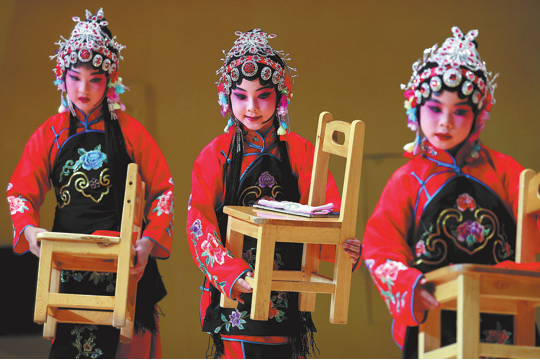UHV line addresses imbalance in energy map

China has come up with a critical new artery in its massive west-toeast power transmission program this year, a move cementing national energy security and further supporting major national strategies in key areas.
The Hami-Chongqing ultra-high voltage direct current power transmission project, dubbed the "Power Silk Road" from Xinjiang Uygur autonomous region to Southwest China's Chongqing municipality, is pivotal to forming a new channel for large-scale energy allocation across the country, according to its operator State Grid Corp of China.
UHV transmission lines refer to power transmission cables operating at voltages exceeding 800 kilovolts of direct current or 1,000 kV of alternating current.
Industry experts believe the 2,260-kilometer project, with a total investment of 28.6 billion yuan ($4.02 billion), is a flagship example of China's national push to simultaneously implement major regional strategies, while significantly enhancing national security capabilities in strategic sectors like energy.
Fully operational since June, the project is expected to transmit over 36 billion kWh of electricity to Chongqing every year, accounting for more than 20 percent of the city's current electricity consumption, said Lin Boqiang, head of the China Institute for Studies in Energy Policy at Xiamen University.
By replacing traditional thermal generation, the power delivered is equivalent to saving approximately 6 million metric tons of coal and cutting carbon dioxide emissions by an estimated 16 million tons annually.
"This massive decarbonization effect supports China's dual goals of peaking carbon emissions before 2030 and achieving carbon neutrality before 2060," said Lin.
The UHV line addresses a fundamental imbalance in China's energy map: the mismatch between the resource-rich but demand-light west, and the resource-poor but consumption-heavy east and central regions.
Over the past years, China has been investing heavily in the construction of UHV power transmission lines to deliver electricity from the country's energy-rich western regions to its booming eastern parts, and increase consumption of clean energy sources for green economic growth.
State Grid Corp of China, the nation's largest power grid operator, has been actively stepping up investment in the construction of UHV power transmission projects in recent years, enabling efficient long-distance transmission of massive amounts of power.
Constructing a vast, interconnected power transmission network nationwide also comes with pioneering methods to integrate biodiversity protection.
State Grid Yangzhou Power Supply Co, for example, has come up with technical innovation, implementing satellite tracking devices and creating a data platform to prevent Oriental white storks, a nationally protected bird, from nesting on high-voltage transmission towers and causing frequent electrical faults.
They also refined tower designs and developed specialized barriers to prevent nesting debris from causing short circuits, the company said during this year's United Nations climate change conference, or COP30.
zhengxin@chinadaily.com.cn
- UHV line addresses imbalance in energy map
- Science, engineering academies add members
- Shivering with delight as winter tourism season begins early
- More efforts urged to tackle crime
- Beijing accelerates renovation of old residential buildings
- Guangzhou optimizes rail services for 15th National Games, Paralympics




































